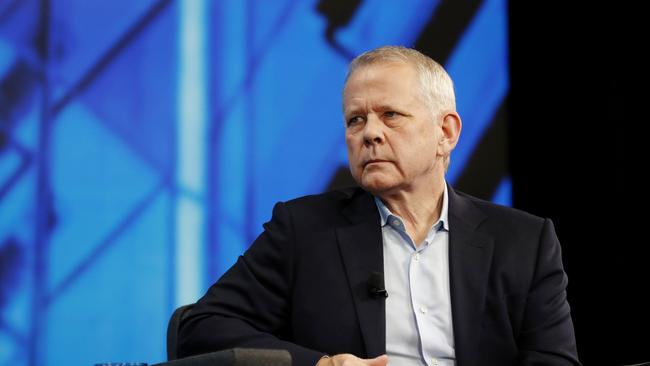NAB backs action on climate targets, calls out opportunities from transition to net zero
Nation’s biggest business bank has backed federal Labor’s action on climate for giving more certainty to industry on the pathway to net zero.

National Australia Bank has backed federal Labor’s action on climate for giving more certainty to industry on the path to net zero, as the lender called out the “immense opportunities” in transforming Australia to a low emissions economy.
Speaking to The Australian ahead of Labor’s climate bill, which was introduced into parliament on Wednesday, NAB chairman Phil Chronican also warned of the risks Australia faces on the global stage if it doesn’t fall into line with other developed nations.
“If we don’t have a sensible path that aligns with where the other major economic blocs are, then we’re not going to be able to partake in the same growth that we’ve been able to achieve in the past,” Mr Chronican cautioned.
“We know that the Europeans are requiring their trading partners to be on a similar path to what they’re on. If we want to be part of that thriving world trade that’s made us the high-income country we are today, then we’re going to need to be aligned with where the rest of the world is.”
Labor’s climate bill, if passed, will require Australia to slash emissions by 43 per cent by 2030 on its path to net zero by 2050, bringing it closer in line with other developed nations.
NAB chief executive Ross McEwan said businesses needed certainty on the country’s long-term climate targets.
“Businesses have been doing a very good job with limited amount of certainty because they realise how important it is,” Mr McEwan told The Australian.
“The new Labor government is having the debate now and the faster they get to a point of certainty the better. We have a real opportunity here,” he said, noting a recent NAB survey showed 73 per cent of the population wanted more done on the climate challenge.
“I think that (survey finding) is a pretty clear mandate for any government.”
NAB’s call for more certainty came as the lender released a report on the economic benefits of the shift to a net-zero economy.
All up, around $20 trillion will be invested in the economy out to 2050, regardless of an emissions transition, the research, completed by Deloitte for NAB, found.
By 2030, $70bn will need to shift away from emissions-intensive industries and into low-emissions activity to avoid driving up the cost of the transition over the long run.
Alongside this, a further $420bn in new investment will be needed over the next 30 years to position Australia’s economy for growth in a low emissions world, the report said.
“Transforming Australia to a low emissions economy is inevitable and complex. If we get it right, the opportunities are immense,” Mr Chronican said.
“This is the Great Reallocation – we will need to change where we invest and what will drive economic growth. It is a transformation Australia can afford, with $20 trillion in investment to be spent regardless of whether the transition is made.”
The cost of inaction will be far greater than any new investment, both economically and environmentally, he warned.
Just four sectors of the economy – energy, mobility, raw material manufacturing, and food and land use – account for 90 per cent of Australia’s emissions. Each of these sectors must lower their emissions if the transition is to be successful.
NAB, the nation’s largest business bank and a major lender to the agriculture sector, said it had been working with its largest greenhouse-gas emitting customers to develop and improve their emission transition plans, after setting new lending targets in late 2021.
Last November, the bank said it would cap its oil and gas exposure at $US2.4bn ($3.2bn) until 2026, and then reduce it in alignment with the International Energy Agency’s net-zero emissions scenario by 2050.
It also set a target for exposure to thermal coal mining to be effectively zero by 2030 and has put a climate lens on its lending activity more broadly.
“We’ve identified that we probably won’t lend to the production of coal for electricity generation, we’re pretty much on record saying that (already),” Mr Chronican said.
“What we’re likely to see (going forward) is that we’re not likely to lend on an emissions-intensive activity if we can’t see how it’s going to survive in the net zero world, because effectively its risk of being a stranded asset has been increased.”
On Wednesday, peer Westpac set its own financed-emissions targets for 2030 and became the last of its major rivals to join the United Nations-convened Net-Zero Banking Alliance.
The bank will only consider directly financing new greenfield oil and gas projects that align with the International Energy Agency’s Net Zero by 2050 scenario, it said as part of a broader update.




To join the conversation, please log in. Don't have an account? Register
Join the conversation, you are commenting as Logout